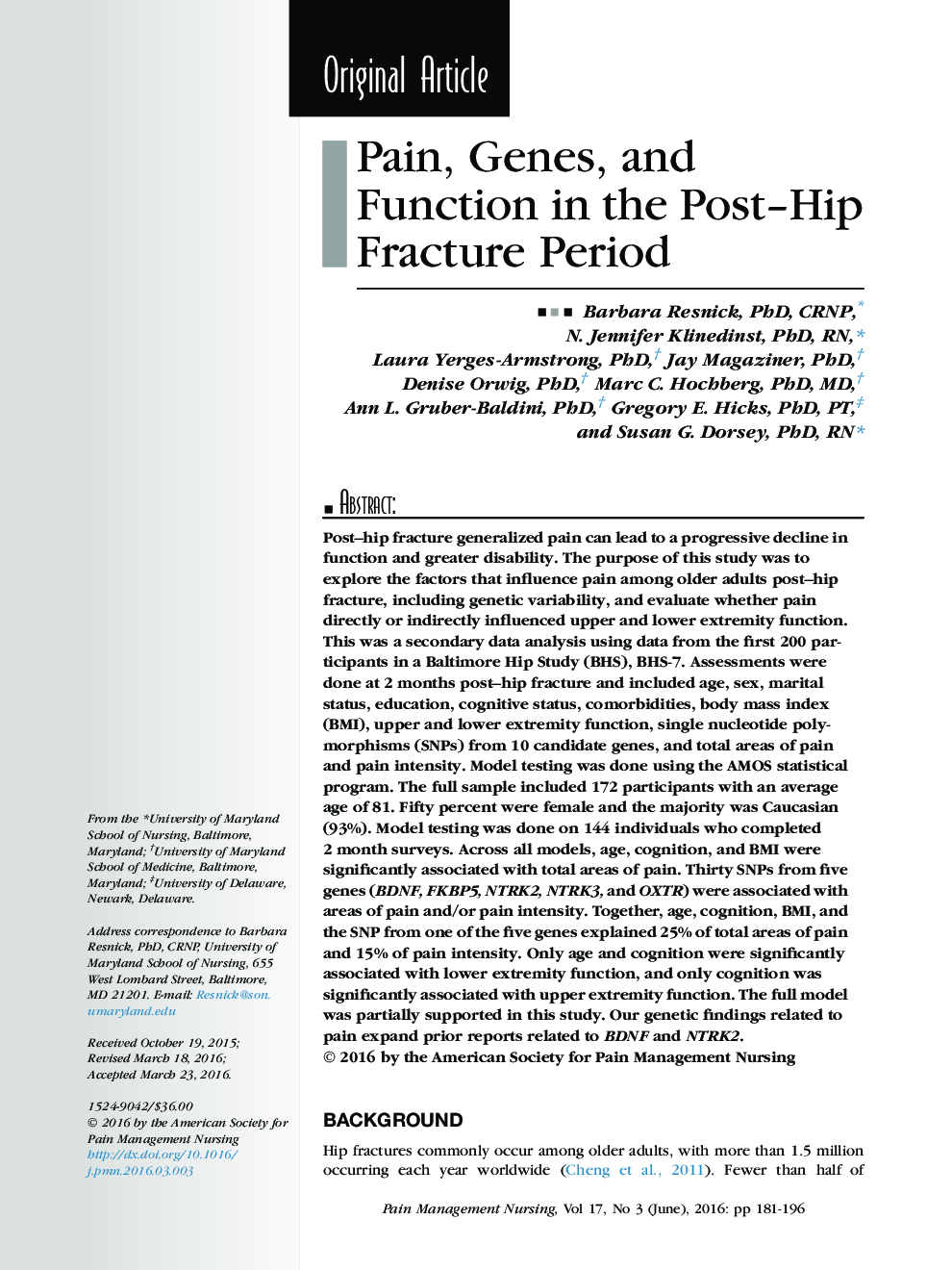| Article ID | Journal | Published Year | Pages | File Type |
|---|---|---|---|---|
| 2679497 | Pain Management Nursing | 2016 | 16 Pages |
Post–hip fracture generalized pain can lead to a progressive decline in function and greater disability. The purpose of this study was to explore the factors that influence pain among older adults post–hip fracture, including genetic variability, and evaluate whether pain directly or indirectly influenced upper and lower extremity function. This was a secondary data analysis using data from the first 200 participants in a Baltimore Hip Study (BHS), BHS-7. Assessments were done at 2 months post–hip fracture and included age, sex, marital status, education, cognitive status, comorbidities, body mass index (BMI), upper and lower extremity function, single nucleotide polymorphisms (SNPs) from 10 candidate genes, and total areas of pain and pain intensity. Model testing was done using the AMOS statistical program. The full sample included 172 participants with an average age of 81. Fifty percent were female and the majority was Caucasian (93%). Model testing was done on 144 individuals who completed 2 month surveys. Across all models, age, cognition, and BMI were significantly associated with total areas of pain. Thirty SNPs from five genes (BDNF, FKBP5, NTRK2, NTRK3, and OXTR) were associated with areas of pain and/or pain intensity. Together, age, cognition, BMI, and the SNP from one of the five genes explained 25% of total areas of pain and 15% of pain intensity. Only age and cognition were significantly associated with lower extremity function, and only cognition was significantly associated with upper extremity function. The full model was partially supported in this study. Our genetic findings related to pain expand prior reports related to BDNF and NTRK2.
